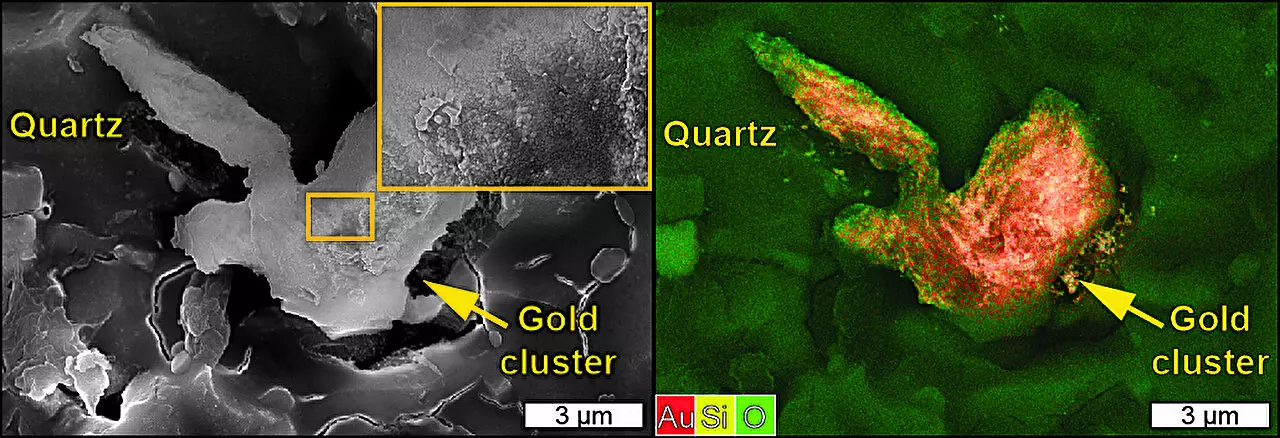For centuries, gold nuggets have captivated human imagination and ignited fervent gold rushes across the globe. Their natural beauty, rarity, and economic value have made them a symbol of wealth and prosperity. Despite the long-standing understanding of gold formation processes, recent research has unveiled a much more dynamic and complex mechanism behind the creation of these valuable treasures. Led by geologists from Monash University, this new investigation introduces an electrifying concept that could reshape our understanding of how gold nuggets form within quartz veins.
Traditionally, geologists have explained gold nugget formation through a relatively straightforward process where gold precipitates from hot, mineral-rich fluids as they traverse cracks in the Earth’s crust. As these fluids cool down or their chemical properties change, gold is believed to separate and become trapped within the quartz-hosted structures. While this explanation accounts for some gold occurrences, it falls short of elucidating the formation of the more sizable nuggets, particularly given the extremely low gold concentrations in these fluids. This inadequacy posed a challenge for researchers, prompting them to explore alternative mechanisms that could account for the notable formations seen in nature.
At the core of this new research lies the intriguing phenomenon of piezoelectricity. Quartz, the primary mineral that encompasses these gold deposits, exhibits the ability to generate electrical charges when subjected to mechanical stress. This principle is already utilized in everyday products such as quartz watches, where slight mechanical pressure produces notable electrical outputs. The researchers began to ponder: could seismic events, which exert tremendous stress on the Earth’s crust, induce a similar electrical effect within quartz veins? This question set the stage for their groundbreaking experiments aimed at uncovering the relationship between geological stress, electric charge generation, and gold precipitation.
To investigate their hypothesis, the research team embarked on a series of sophisticated experiments designed to mimic the natural conditions quartz experiences during an earthquake. They submerged quartz crystals in a gold-rich fluid and applied mechanical stress using motors to accurately replicate seismic activity. Following this experimental setup, the quartz samples were examined microscopically to determine the presence of gold deposits. The findings were astonishing; not only did the quartz electrochemically deposit gold, but it also facilitated the formation and accumulation of gold nanoparticles.
One of the most remarkable outcomes of the study revealed that gold tended to deposit preferentially onto previously existing gold grains rather than forming entirely new ones. This phenomenon is attributed to the unique properties of gold, a conductive element, contrasted with the electrical insulation properties of quartz. As gold particles began to accumulate on quartz, they created a self-sustaining cycle, where existing gold acted as a nucleation site, promoting further deposition. Dr. Chris Voisey articulated that, effectively, the quartz behaves like a natural battery, with gold serving as an electrode, gradually accumulating more gold with each seismic event.
This novel understanding of gold nugget formation presents significant implications for both geological science and the field of gold mining. For geologists, it offers a fresh perspective on the interconnectedness of physical and chemical processes that manipulate mineral formations within the Earth. For miners and treasure hunters, recognizing that large nuggets may be primarily linked to earthquake-related deposits could enhance prospecting strategies and lead to more fruitful discoveries.
The pioneering research undertaken by Monash University sheds light on a fascinating aspect of geology that intertwines the mechanical, electrical, and chemical realms within our planet. The intricate process of piezoelectricity adds an electrifying new layer to our understanding of how massive gold nuggets form in quartz veins. As scientists continue to unravel the secrets of the Earth, the world of geology promises to be full of surprises, offering both new knowledge and profound appreciation for the natural wonders beneath our feet.


Leave a Reply